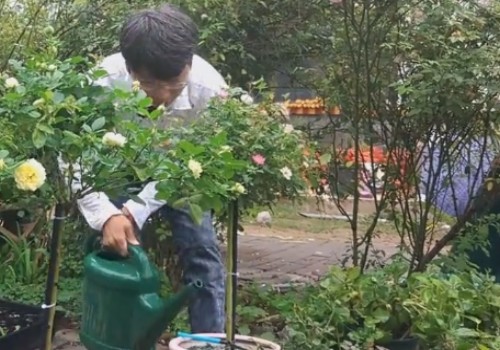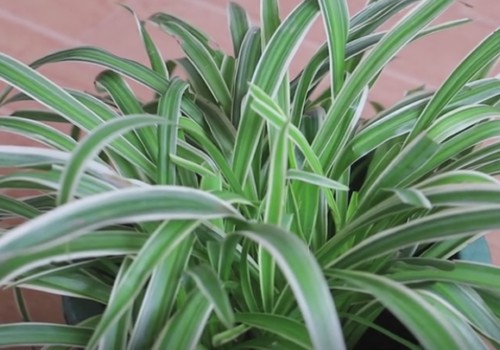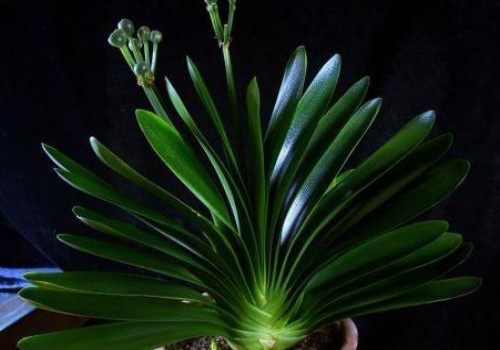How to maintain and manage the autumn rose
In autumn with more cloudy and rainy weather, the temperature difference between day and night is usually very large, the temperature is higher during the day, and the temperature is very low at night, and in such a climate, potted rose is often very easy to get sick. Especially when the temperature difference between day and night is large and the dew is heavy after autumn, the rose is very easy to develop downy mildew.

Once the rose has downy mildew, it is often very difficult to cure, and the rose may lose all its leaves overnight, which is very serious for flowering plants. So, let's take this opportunity to discuss with you how to maintain and manage the autumn rose.
Autumn is the second peak growing season of rose in a year, and the plant grows a large number of leaves and buds, especially the number of buds is very large. Because the rose grows rapidly in autumn, coupled with the climate of autumn, the plant is easy to get sick. In the meantime, we need to pay special attention to the prevention and control of diseases and insect pests.
Spraying broad-spectrum fungicides
In order to do a good job in the prevention and control of diseases and insect pests, it is necessary to spray broad-spectrum fungicides on potted rose in time after entering autumn. And if once the potted rose is sick and then applied, the effect is often very poor. The method of spraying drugs is also relatively simple, usually spraying broad-spectrum fungicides such as mancozeb or chlorothalonil.
There are also some precautions in the process of spraying medicine, that is, the front and back of the leaves should be sprayed evenly, so that the effect of preventing diseases and insect pests will be much better. Because diseases and insect pests not only exist in the front of the leaf, the back of the leaf tends to be more, and more hidden.
II. Timely and scientific fertilization
Because the rose grows very fast in autumn, if the fertilizer is not applied in time, the original will often cause a lack of nutrients, then the rose in this case may show an unhealthy state of leaf growth. Under normal circumstances, we often use large pots to grow rose, so under normal circumstances, it is OK to apply granular compound fertilizer for rose.
As long as we use granular compound fertilizer correctly, the growth effect of rose is very good, but also very economical. Generally speaking, we only need to sprinkle these granular fertilizers on the basin, or after sprinkling the fertilizer, let the fertilizer be mixed with the topsoil, the topdressing effect will be better.
Of course, due to the large temperature difference between day and night in autumn, rose leaves are more likely to grow unhealthy, so at this time we also need to apply some nitrogen, phosphorus and potassium fertilizer, which can promote the rapid aging of leaves. Otherwise, the leaves of the rose will always be tender, so they are particularly vulnerable to bacterial infection. At this time, we need to often spray foliar fertilizer, can be sprayed with potassium dihydrogen phosphate, which is very good for plant growth.
And this fertilizer is also very cheap, with it sprayed on the leaves of the rose, can accelerate its aging. In this way, the ability of potted rose to resist diseases and insect pests will be further enhanced. Generally use powdered potassium dihydrogen phosphate like granulated sugar, and then spray it according to 1000 times soluble in water, spraying both sides of the leaves evenly.
Of course, we can also use some beneficial microorganisms, which can effectively resist the invasion of rhizobium, because the rose is easy to nodule. If this beneficial microbe is often used, it can naturally inhibit the occurrence of rhizobium, so the rose is not prone to root cancer. When in use, it is generally diluted by 500-1000 times with water, and then the potted rose is watered once a month or half a month.
In this way, there are naturally more beneficial microorganisms in the soil, and if there is excess fertilizer in the soil, beneficial microorganisms can also decompose them, avoid fertilizer damage and waste of resources, and effectively avoid or reduce salinization in basin soil.
Therefore, in autumn, the maintenance and management of potted rose, the management of diseases and insect pests and fertilization should be taken as the focus. In particular, fertilization requires not only topdressing the roots, but also spraying foliar fertilizer to speed up the aging of leaves, then spraying some broad-spectrum fungicides, and then watering some beneficial microorganisms regularly, so that there will be basically no growth problems in our rose.
Time: 2019-05-28 Click:
- Prev

How to raise the orchid to draw more vines?
As a handle of potted green plants, Cymbidium is famous for being very easy to feed. And very suitable for indoor foliage plants, can grow a lot of small orchids, very lovable. However, many flower friends say that their potted orchids draw vines more slowly, and they do not grow small ones for a long time. that
- Next

The reason why potted Magnolia doesn't bloom
As we all know, if family potted magnolia has been cultivated for only 1-2 years, it is usually impossible to blossom. But if it still does not blossom after 3-4 years, then there must be a reason. Next, the editor will tell you why the magnolia does not blossom. Adequate nutrition
Related
- Fuxing push coffee new agricultural production and marketing class: lack of small-scale processing plants
- Jujube rice field leisure farm deep ploughing Yilan for five years to create a space for organic food and play
- Nongyu Farm-A trial of organic papaya for brave women with advanced technology
- Four points for attention in the prevention and control of diseases and insect pests of edible fungi
- How to add nutrient solution to Edible Fungi
- Is there any good way to control edible fungus mites?
- Open Inoculation Technology of Edible Fungi
- Is there any clever way to use fertilizer for edible fungus in winter?
- What agents are used to kill the pathogens of edible fungi in the mushroom shed?
- Rapid drying of Edible Fungi

